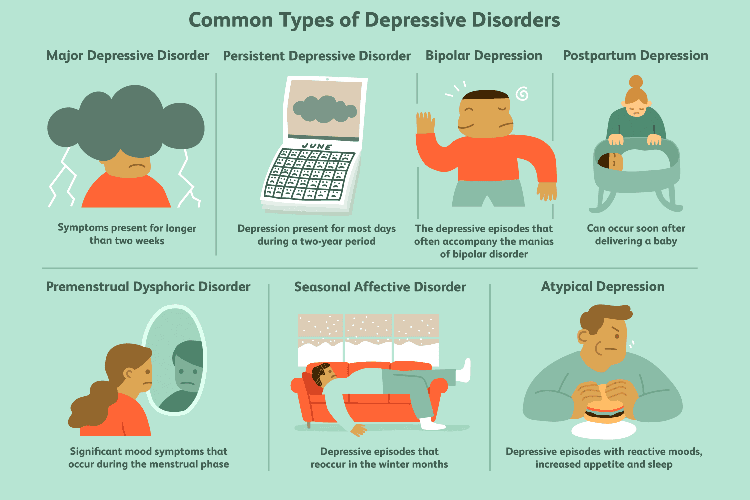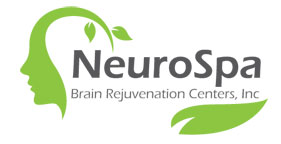Depression is a mood disorder that causes a persistent feeling of sadness and loss of interest. Also called major depressive disorder or clinical depression, it affects how you feel, think and behave and can lead to a variety of emotional and physical problems. You may have trouble doing normal day-to-day activities, and sometimes you may feel as if life isn’t worth living.
TMS Therapy for Depression


What is depression: Depression is a debilitating disorder affecting nearly 10% of the US population although the number of people affected are far larger when varying subtypes of depression are considered. Depression is generally defined as a persistent feeling of sadness and loss of interest in usual activities. Depression often affects how you feel, think and behave and can lead to a variety of emotional and physical problems including poor memory, poor concentration, non-specific numbness and tingling sensations and more. Depressed individuals may have trouble doing normal day-to-day activities and have difficulty with social and family engagements. In addition, depression often leads to increased risk of other health conditions including dementia, stroke, obesity, high blood pressure and more.
What causes depression: Historically, depression was erroneously thought of as a non-physiological condition and more of a personality ‘weakness’. However, decades of advances in neuroscience has clearly shown a physiological and biological basis for depression that are in play. Both environmental and hereditary predispositions can increase or decrease risks of depression.
Until recently, the biological basis of depression focused on the reduced concentration of neurotransmitters in specific parts of the brain and within specific networks forming the ‘chemical imbalance’ theory that has been the basis of medication remedies for depression for last 30-40 years. However, more advanced imaging and physiological techniques including fMRI (functional MRI) and quantitative electroencephalography (QEEG) have successfully shown clear dysfunction of connectivity and metabolic activity between specific areas of brain. Specifically, dysregulation of neuronal activity in several areas of the pre-frontal cortex including dorsolateral, dorsomedial, and orbitofrontal cortices and their connections with the striate nuclei and thalamus have shown to be heavily involved in depression. Moreover, direct stimulation of these areas with small pulses of carefully-orchestrated electrical signals has been shown to restore ‘order’ and effectively and safely reverse depression in a long-lasting, persistent manner.
What is the treatment of depression:
For several decades, the treatment of depression by in large involved two strategies: 1) use of medications to simply increase the concentration of the chemical serotonin in the brain and/or 2) trial of psychotherapy and cognitive behavior therapy (CBT). The rate of success or remission of symptoms using these conventional strategies based on large clinical studies is less than 18% overall. This means that vast majority of patients with depression remain symptomatic and continue to suffer.
Repetitive Transcranial Magnetic Stimulation (r TMS) has revolutionized treatment of depression and has become one of the most effective and safest ‘natural’, non-medication, remedies for depression. The rates of improvement using TMS treatment for depression is over 70% and leads to complete remission in nearly 40-50% of individuals based on several large independent trials. The rate of improvement is nearly 2 or 3 times that seen with conventional treatments.
The research in support of use of TMS therapy for depression is very robust and has now been FDA-approved for treatment of major depression. The large body of objective, randomized, controlled studies that show the benefits of TMS is slowly making use of medication outdated. For additional information regarding use of TMS for treatment-resistant depression, please click on the link to TMS on this website.
For evaluation call: (949) 652-7301
References:
- Allan CL, Herrmann LL, Ebmeier KP. Transcranial Magnetic Stimulation in Management of Mood Disorders. Neuropsychobiology. 2011;64(3)163-9. [Met-analysis]
- Avery DH, Isenberg KE, Sampson SM, et al. Transcranial magnetic stimulation in the acute treatment of major depression: clinical response in an open-label extension trial. J Clin Psychiatry 2008; 69(3):441-451.
- Burt T, Lisanby SH, Sackeim HA: Neuropsychiatric applications of transcranial magnetic stimulation: a meta analysis. Int J Neuropsychopharmacol 2002; 5:73–103 [E]
- Carpenter LL, Janicak PG, Aaronson ST, et al. Transcranial Magnetic Stimulation (TMS) for Major Depression: A Multisite, Naturalistic, Observation Study of Acute Treatment Outcomes in Clinical Practice Depression and Anxiety. 2012;29:587-596.
- Caufield, K.A.m et,al. Antidepressant Effect of Low Frequency Right-Sided rTMS in Two Patients With Left Frontal Stroke. Brain Stimul. 2017; Jan-Feb;10(1): 150-151.
- Connolly RK, Helmer A, Cristancho MA, O’Reardon JP. Effectiveness of transcranial magnetic stimulation in clinical practice post-FDA approval in the United States: results observed with the first 100 consecutive cases of depression at an academic medical center. J Clin Psychiatry. 2012;73:e567–e573. [Study for Philadelphia clinic, again showing effectiveness as an adjunctive treatment to antidepressant medications in the first 100 patients treated at their university-based TMS clinical service following FDA approval].
- Couturier JL: Efficacy of rapid-rate repetitive transcranial magnetic stimulation in the treatment of depression: a systematic review and meta-analysis. J Psychiatry Neurosci 2005; 30:83–90 [E]
- Dannon PN, Dolberg OT, Schreiber S, Grunhaus L: Three and six-month outcome following courses of either ECT or rTMS in a population of severely depressed individuals—preliminary report. Biol Psychiatry 2002; 51:687–690 [A−]
- Dunner DL, Aaronson ST, Sackeim HA, et al. A multisite, naturalistic, observational study of transcranial magnetic stimulation for patients with pharmacoresistant major depressive disorder: durability of benefit over a 1-year follow-up period. J Clin Psychiatry. 2014 Dec;75(12):1394-401
- Eranti S, Mogg A, Pluck G, Landau S, Purvis R, Brown RG, Howard R, Knapp M, Philpot M, Rabe-Hesketh S, Romeo R, Rothwell J, Edwards D, McLoughlin DM: A randomized, controlled trial with 6-month follow-up of repetitive transcranial magnetic stimulation and electroconvulsive therapy for severe depression. Am J Psychiatry 2007; 164:73–81 [A–]
- Fitzgerald PB, Grace N, Hoy KE, et al. An Open Label Trial of Clustered Maintenance rTMS for Patients with Refractory Depression. Brain Stimulation 2013;6(3):292-297.
- Fregni F, Marcolin MA, Myczkowski M, et al. Predictors of antidepressant response in clinical trials of transcranial magnetic stimulation. Int J Neuropsychopharmacol. 2006; 9:641–654.
- Gaynes BN, Lux LJ, Lloyd SW, et al. Nonpharmacologic Interventions for Treatment-Resistant Depression in Adults. Comparative Effectiveness Review, Number 33. Agency for Healthcare Research and Quality (AHRQ); September 2011.Publication #11-EHC056-EF. Last accessed on 07/10/2017 at CER33
- George MS, Lisanby SH, Avery D, et al. Daily left prefrontal transcranial magnetic stimulation therapy for major depressive disorder. A sham-controlled randomized trial. Arch Gen Psychiatry 2010; 60(5)507-516.
- George MS, Taylor JJ, Short EB. The expanding evidence base for rTMS treatment of depression. Curr Opin Psychiatry. Jan 2013;26:13-8. [Review]
- George MS, Wassermann EM, Williams WE, et al. Mood improvements following daily left prefrontal repetitive transcranial magnetic stimulation in patients with depression: a placebo-controlled crossover trial. Am J Psychiatry. 1997;154:1752–1756. [Early study with preliminary evidence.]
- Gross, M, Nakamura L, Pascual-Leone A, et al. Has Repetitive Transcranial Magnetic Stimulation (rTMS) Treatment for Depression Improved? A systematic Review and Meta-analysis Comparing the Recent vs.The Earlier rTMS Studies. Acta Psychiatr Scand.2007; 116(3): 165-173.
- Herrmann LL, Ebmeier KP: Factors modifying the efficacy of transcranial magnetic stimulation in the treatment of depression: a review. J Clin Psychiatry 2006; 67:1870–1876 [E]
- Herwig U, Fallgatter AJ, Hoppner J, Eschweiler GW, Kron M, Hajak G, Padberg F, Naderi-Heiden A, Abler B, Eichhammer P, Grossheinrich N, Hay B, Kammer T, Langguth B, Laske C, Plewnia C, Richter MM, Schulz M, Unterecker S, Zinke A, Spitzer M, Schonfeldt-Lecuona C: Antidepressant effects of augmentative transcranial magnetic stimulation: randomised multicentre trial. Br J Psychiatry 2007; 191:441–448 [A]
- Janicak PG, Dowd SM, Martis B, et al. Repetitive transcranial magnetic stimulation versus electroconvulsive therapy for major depression: preliminary results of a randomized trial. Biol Psychiatry. 2002; 51:659–667.
- Janicak PG, Dunner DL, Aaronson ST, et al. Transcranial magnetic stimulation (TMS) for major depression: a multisite, naturalistic, observational study of quality of life outcome measures in clinical practice. CNS Spectr. 2013 Dec;18(6):322-32.
- Janicak PG, Nahas Z, Lisanby SH, et al. Durability of clinical benefit with transcranial magnetic stimulation (TMS) in the treatment of pharmacoresistant major depression: assessment of relapse during a 6-month, multisite, open-label study. Brain Stimul. 2010 Oct;3(4):187-99.
- Janicak PG, O’Reardon JP, Sampson SM, et al. Transcranial magnetic stimulation in the treatment of major depressive disorder: a comprehensive summary of safety experience from acute exposure, extended exposure, and during reintroduction treatment. J Clin Psychiatry. 2008 Feb;69(2):222-32
- Jorge RE, Moser DJ, Acion L, Robinson RG: Treatment of vascular depression using repetitive transcranial magnetic stimulation. Arch Gen Psychiatry 2008; 65:268–276 [A]
- Kozel FA, George MS: Meta-analysis of left prefrontal repetitive transcranial magnetic stimulation (rTMS) to treat depression. J Psychiatr Pract 2002; 8:270–275 [E]
- Lam RW, Chan P, Wilkins-Ho M, et al. Repetitive transcranial magnetic stimulation for treatment-resistant depression: a systematic review and metaanalysis. Can J Psychiatry 2008; 53:621-631.
- Lisanby SH, Husain MM, Rosenquist PB, et al. Daily Left Prefrontal Repetitive Transcranial Magnetic Stimulation in the Acute Treatment of Major Depression: Clinical Predictors of Outcome in a Multisite, Randomized Controlled Clinical Trial. Neuropsychopharmacology. 2009; 34(2): 522-34.
- Mantovani A, Pavlicova M, Avery D, et al. Long-term efficacy of repeated daily prefrontal transcranial magnetic stimulation (TMS) in treatment-resistant depression. Depress Anxiety. 2012;29:883–890. [The effects appear durable, at least at 3 and 6 months.]
- Martin JL, Barbanoj MJ, Schlaepfer TE, Clos S, Perez V, Kulisevsky J, Gironell A: Transcranial magnetic stimulation for treating depression. Cochrane Database Syst Rev 2002; CD003493 [E]
- Martin JL, Barbanoj MJ, Schlaepfer TE, Thompson E, Perez V, Kulisevsky J: Repetitive transcranial magnetic stimulation for the treatment of depression. Systematic review and meta-analysis. Br JPsychiatry 2003; 182:480–491 [E]
- McDonald WM, Durkalski V, Ball ER, et al. Improving the antidepressant efficacy of transcranial magnetic stimulation: maximizing the number of stimulations and treatment location in treatment-resistant depression. Depress Anxiety. 2011;28:973-980. [Open-label extension of the OPT-TMS randomized trial showed that about 30% of patients remit, but that in many this can take up to 6 weeks of therapy.
- O’Reardon JP, Solvason HB, Janicak PG, et al. Efficacy and safety of transcranial magnetic stimulation in the acute treatment of major depression: a multisite randomized controlled trial. Biol Psychiatry. 2007;62(11):1208-1216.
- Perera T, George MS, Grammer G, et al. The Clinical TMS Society Consensus Review and Treatment Recommendations for TMS Therapy for Major Depressive Disorder. Brain Stimul. 2016; 9(3):336-46. Printed on 6/4/2018. Page 10 of 11.
- Pridmore S: Substitution of rapid transcranial magnetic stimulation treatments for electroconvulsive therapy treatments in a course of electroconvulsive therapy. Depress Anxiety 2000; 12:118–123 [B]
- Rosa MA, Gattaz WF, Pascual-Leone A, et al. Comparison of repetitive transcranial magnetic stimulation and electroconvulsive therapy in unipolar non-psychotic refractory depression: a randomized, single-blind study. Int J Neuropsychopharmacol. 2006; 9:667–676.
- Rush, AJ, Trivedi MH et al. Acute and longer-term outcomes in depressed outpatients requiring one of several treatment steps: a STAR*D report. Am J Psychiatry 2006;163(11) 1905-1917.
- Schulze-Rauschenbach SC, Harms U, Schlaepfer TE, Maier W, Falkai P, Wagner M: Distinctive neurocognitive effects of repetitive transcranial magnetic stimulation and electroconvulsive therapy in major depression. Br J Psychiatry 2005; 186:410–416 [B]
- Schutter DJ. Antidepressant efficacy of high frequency transcranial magnetic stimulation over the left dorsolateral prefrontal cortex in double-blind sham-controlled designs: a meta-analysis. Psychol Med 2009; 39:65-75

